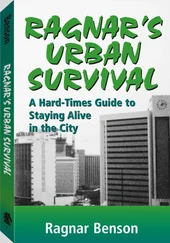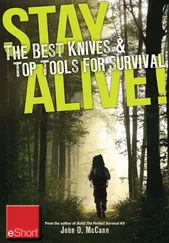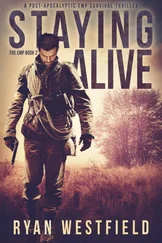Ragnar Benson - Ragnar's Urban Survival - A Hard-Times Guide to Staying Alive in the City
Здесь есть возможность читать онлайн «Ragnar Benson - Ragnar's Urban Survival - A Hard-Times Guide to Staying Alive in the City» весь текст электронной книги совершенно бесплатно (целиком полную версию без сокращений). В некоторых случаях можно слушать аудио, скачать через торрент в формате fb2 и присутствует краткое содержание. Год выпуска: 2009, ISBN: 2009, Жанр: Старинная литература, на английском языке. Описание произведения, (предисловие) а так же отзывы посетителей доступны на портале библиотеки ЛибКат.
- Название:Ragnar's Urban Survival: A Hard-Times Guide to Staying Alive in the City
- Автор:
- Жанр:
- Год:2009
- ISBN:1581600593
- Рейтинг книги:5 / 5. Голосов: 1
-
Избранное:Добавить в избранное
- Отзывы:
-
Ваша оценка:
- 100
- 1
- 2
- 3
- 4
- 5
Ragnar's Urban Survival: A Hard-Times Guide to Staying Alive in the City: краткое содержание, описание и аннотация
Предлагаем к чтению аннотацию, описание, краткое содержание или предисловие (зависит от того, что написал сам автор книги «Ragnar's Urban Survival: A Hard-Times Guide to Staying Alive in the City»). Если вы не нашли необходимую информацию о книге — напишите в комментариях, мы постараемся отыскать её.
Ragnar's Urban Survival: A Hard-Times Guide to Staying Alive in the City — читать онлайн бесплатно полную книгу (весь текст) целиком
Ниже представлен текст книги, разбитый по страницам. Система сохранения места последней прочитанной страницы, позволяет с удобством читать онлайн бесплатно книгу «Ragnar's Urban Survival: A Hard-Times Guide to Staying Alive in the City», без необходимости каждый раз заново искать на чём Вы остановились. Поставьте закладку, и сможете в любой момент перейти на страницу, на которой закончили чтение.
Интервал:
Закладка:
In times past, vegetables were often salted, pickling them in large brine barrels. Results were and still are borderline. But maybe it will be appropriate to try this method again.
At any rate, city survivors should expect to keep very busy putting up the crop at harvest time. Some of this technology is as old as time, but it will all work like a champ in a survival context. The total food supplies we raise or forage from the land and put up one way or another may be modest, but their importance will be tough to overemphasize.
Chapter 8

Emergency Shelter in Cities
Sheltering in built-up areas poses special challenges. Just as in planning for water, food, and energy, three separate and distinct arrangements for shelter must be made. Many city survivors, looking at what other survivors have had to endure in the course of sheltering in big cities, opt for at least four different contingency plans.
Shelter plans in cities are hugely more difficult than in the country. City survivors are always at the mercy of the whims of fate to an extent that astounds country survivors. No one can predict where an errant artillery round might land, where a commander might send his soldiers, or where the tanks may punch through the city Chances are always virtually 100 percent that one or two contingency shelter plans absolutely will not be workable.
Survivors of Stalingrad, for instance, reported that once fires started in the city, they burned as long as 2 weeks! It was so hot that Soviet soldiers 2 miles away could feel the heat. The sky glowed red for nights on end, and tens of thousands died. German forces did not start the fires and it was well beyond their capacity to put them out, once started.
Dozens of additional considerations must be addressed when picking city shelter locations, in contrast to making similar deci sions out in the country. Hiding and camouflage are the most important elements of a country retreat. We could also wish that our country retreat is relatively near our stored supplies and trade goods, water, energy, and some adequate gardening soils. In the city these various components are seldom found together near the retreat.
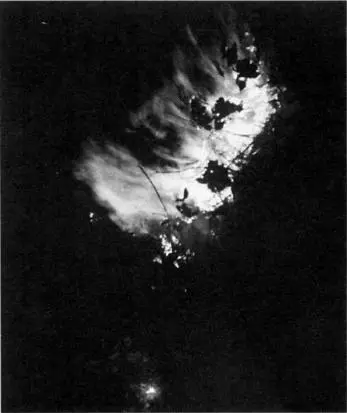
Uncontrolled fires are a danger and scourge in cities.
Hiding is even more important in the city than in the country. So much so that other elements of survival may have to be compromised. In other words, city survivors may find it necessary to walk or ride bicycles a mile or two to secure water, tend their gardens or their livestock. Hiding is so important that frequently other elements of survival are not thought of until lack of food, water, and fuel becomes critical.
There are simply too many bad guys, both on our side and on their side, not to hide. It sounds romantic and macho now to claim that you can hold them at bay with superior firepower, but as a practical matter duking it out with any of these people is not practical, especially in the long run.
Family units are the best survival groups. Down through the centuries, family organizations have always survived best, especially in societies with records of strong family ties. At the same time, however, families make terrible combat units. Survivors cannot and will not send sons and daughters out on patrol, suspecting they will likely become casualties.
Another truth learned in the past several hundred years, and in this century in particular, involves the fact that city survivors can not allow themselves to become refugees. Refugees are always subject to the whim and caprice of soldiers, either ours or theirs, and of governments.
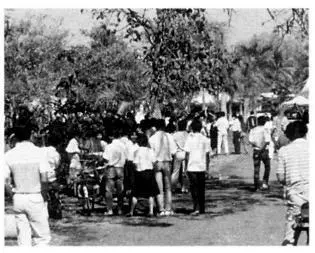
Never become a refugee. Refugees cannot control their destinies.
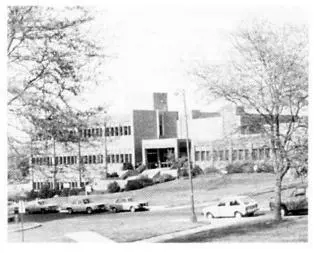
Avoid sheltering near government buildings. Major government complexes will be targets of attackers.
The only options for refugees, in either case, are to become dead or become slaves. People already psychologically dependent on government seem to be the ones who elect to become refugees. I cannot understand voluntary refugees in any other context.
City survivors absolutely must hide during the worst of the fighting, leaving the retreat only to move if burned or blasted out or to replenish food, water, and fuel supplies. Survivors may be forced out briefly to tend the garden or the livestock or to dispose of waste. Keep in mind that emergencies have a way of passing, but expect to spend lots of time hunkered down in the retreat.
Being relatively close to water, stored supplies, and tillable ground is helpful, but being far away from certain particularly dangerous places is far more helpful. I have mentioned that my dad lived across the street from a railway switching yard in World War I Germany. Had bombing been carried out to the extent it was in World War II, this could have been a deadly situation.
Good places to avoid today? Government buildings of any kind, armories, supply depots, motor pools, troop billets, refineries, freeway cloverleafs, petroleum storage areas, pipelines, waterworks, telephone exchanges, ammunition factories, power generation and distribution facilities, central freeway interconnection points, major bridges, por: facilities, hospitals, apartments where government officials might meet or live, and even places where high government officials go to recreate. As a practical matter, military and survival veterans claim it is almost impossible to know ahead with any certainty which areas of one's city will be targeted during the course of urban conflict. The best we can do is to pick places unlikely to be in the maelstrom. This may provide a perhaps 50-50 chance of being spared, which is certainly not much of a guarantee.
Understanding how aggressor forces might likely sweep into a city might be helpful. Cities overrun and then recaptured over and over again provide some examples, but not much hope. The Warsaw Ghetto comes to mind. Each side expanded its operations till the ghetto was completely trashed. At the end, German SS generals bragged that all buildings in the ghetto were completely pulverized and would now make good construction material.
Two philosophies are always true relative to modern urban warfare. First, attacking soldiers won't move up broad, open thoroughfares into the open arms of defenders. They will move through built-up areas by punching through buildings, especially when these buildings are very large, as in industrial areas, or when they are virtually interlocking, as is true in most European cities and some U.S. cities characterized by row houses.
Second, nondescript, plain vanilla hides well. There are examples of unique retreats, extremely cleverly hidden, but in general, being the 287th house in a basically look-alike suburb provides safety. The same is true of the retreater who is in one of 43 identical apartments in a giant complex.
I was in one of these recently, just north of Washington, D.C. The corridors in these complexes were probably hundreds of yards long. Except for numbers on the doors, everything was shockingly the same. The dreary sameness would have driven me nuts. The fellow I talked with in the ccmplex didn't know the names of either of his next-apartment-over neighbors, but he did know the people across the hall by sight enough to say "hi" when he saw them.
Читать дальшеИнтервал:
Закладка:
Похожие книги на «Ragnar's Urban Survival: A Hard-Times Guide to Staying Alive in the City»
Представляем Вашему вниманию похожие книги на «Ragnar's Urban Survival: A Hard-Times Guide to Staying Alive in the City» списком для выбора. Мы отобрали схожую по названию и смыслу литературу в надежде предоставить читателям больше вариантов отыскать новые, интересные, ещё непрочитанные произведения.
Обсуждение, отзывы о книге «Ragnar's Urban Survival: A Hard-Times Guide to Staying Alive in the City» и просто собственные мнения читателей. Оставьте ваши комментарии, напишите, что Вы думаете о произведении, его смысле или главных героях. Укажите что конкретно понравилось, а что нет, и почему Вы так считаете.


